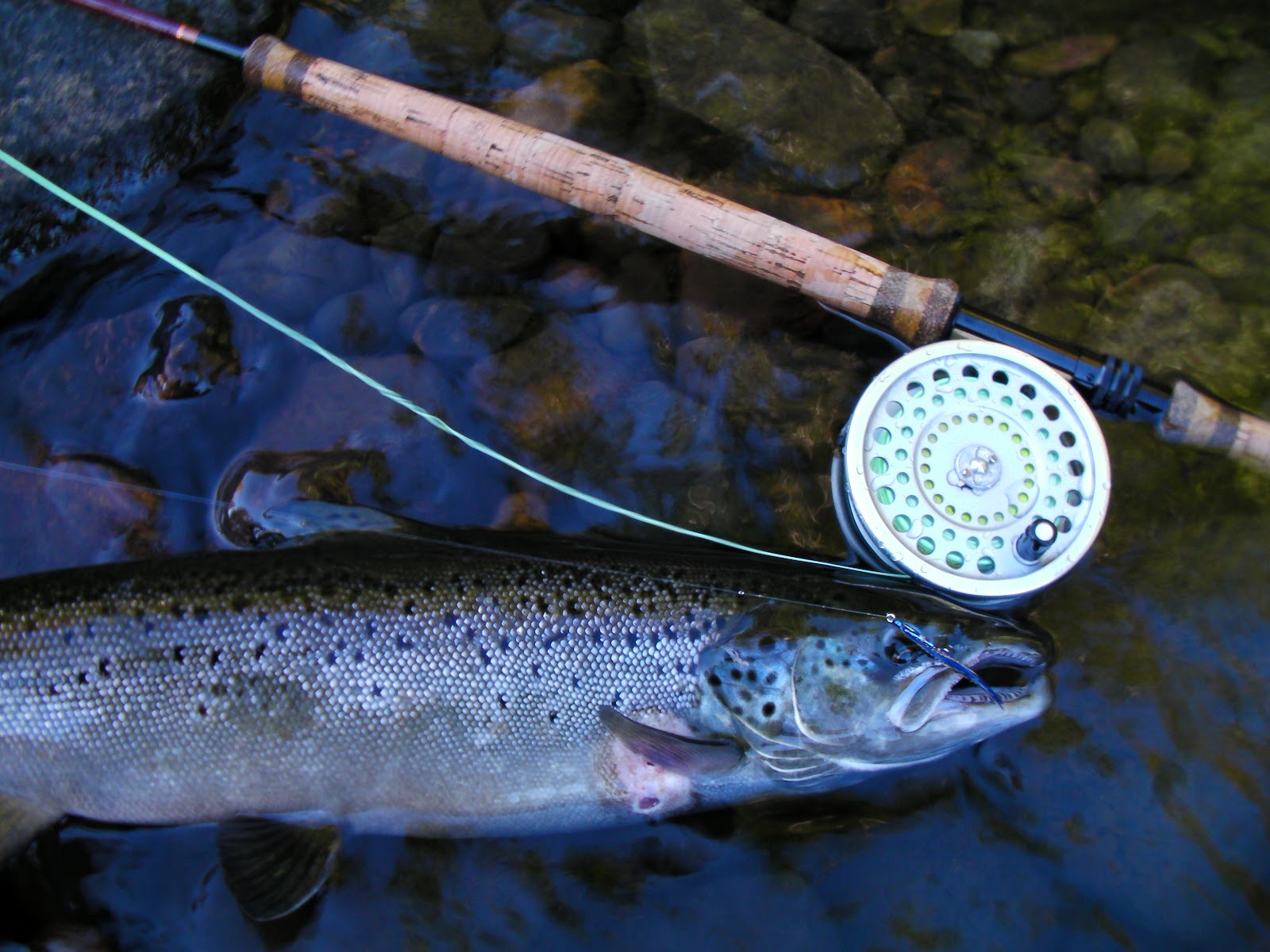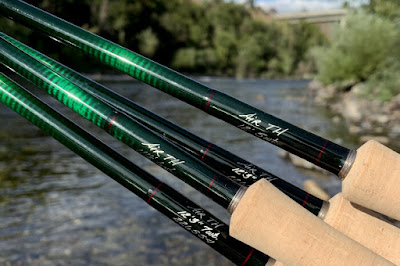Spring Atlantic Salmon Fishing: Chapter 3 The Flies
Big colorful Dee flies are great patterns for spring fishing
Does the choice of fly matter in Atlantic salmon fishing? There is endless debate amongst fishermen on both sides of yes and no.
We all have our own opinions on the matter. I fall in the middle ground category. My answer is always, "depends on conditions".
"The fly that's fished most will be the most successful", holds true for the most part. We fishermen tend to follow the trend of what has been successful in the past and that could be enough to fool salmon.
Classic feather wings, hairwings, Spey and Dee flies, tube flies and shrimp flies....they all seem to catch fish.
Flies for Atlantic salmon are ever evolving with new trends and a plethora of new tying materials available, a next day, home delivery away.
It seems the type of fly doesn't matter. Or does it?
Mathieu fooled this chunky Springer with a white winged Ackroyd
In part one, I outlined how early, migrating spring fish, will take or refuse a fly depending on their temperament which is dependent on many factors like water conditions.
These fish have fattened up in their salty environment gorging themselves on baitfish and crustaceans not long before they enter their natal rivers. Their feeding temperaments are still freshly engrained, so a well swung fly across their noses will get their aggressive and opportunistic feeding behavior triggered.
Most of the Atlantic salmon flies we tie are not an imitation of any specific prey item as are the flies we tie for trout or any other species we fish for that are actively feeding. "Matching the hatch", is not really a theme in Atlantic salmon fishing, although it is most prevalent in the fly patterns we tend to fish in the early part of the season or run. Baitfish imitations like the Magog Smelt and shrimp imitations like the General Practitioner are fished with success in early spring.
A Magog Smelt variation with a Tiger Ghost body
A selection of long winged tube flies
Long winged shank and tube flies have been a staple on European rivers and have soared in popularity here in eastern North America. To me, these flies, despite their endless variations in sizes, shapes, and colors, mostly imitate the silhouette and motion of a major Atlantic salmon food source, the glass eels and elvers.
Glass eels
Just like Atlantic salmon, glass eels will migrate from the Atlantic into fresh water estuaries in the spring and throughout summer months. Salmon will intercept these prey items as they enter fresh water.
Like their name suggests, glass eels are transparent. As they approach their new fresh water environments, they progressively become pigmented and metamorphosize into elvers.
Elver
Flies tied with long furs and feathers that imitate the snake like motion of an eel when swimming are what I prefer to use for, fresh from the ocean, spring fish. Water temperatures will dictate whether I fish on the surface with a hitched Sunray Shadow type fly or subsurface with a Scandinavian type, long winged, Temple Dog style tube fly.
The second photo shows a chewed up tube fly freshly removed from the Springer's jaw in the first photo. The fly measured 10 inches long thanks to the long saddle hackles tied to the tube fly hook. The third photo shows how this system can extend wing length without it getting fouled up by the hook.
These type flies are not limited to their use in spring only. They can be really great for summer run fish. Hitching long winged flies is as exciting as dead drifting dry flies.
I will typically fish 95% surface flies in the summer months. I focus on fresh run, aggressive fish and try to leave the sulckers alone.
Irish shrimp style patterns
Shrimp and krill are also a major food source for salmon. A brightly colored shrimp pattern can trigger a feeding response and are good choices in cold or dirty water. Patterns like a General Practitioner, Ally's Shrimp, Cascade, or Sugarman Shrimp are excellent attractors!
I really enjoy tying and fishing Spey flies. Simple, but elegant patterns
Spey flies are also a great shrimp imitation. Just like the natural, these flies have lots of moving parts to entice a salmon! I typically use them in clearer water with long leaders.
This opening day Springer crushed a big Grey Heron spey fly in a heavy flow.
A focus on Atlantic salmon prey item imitations for early spring fishing is one of the ways I like to approach my fly choice. Water conditions will have the biggest role on size, color, and weight.
Low and clear conditions can force you to adapt to summer fishing methods and flies. The same # 6 Blue charm on a long leader and floating line we fish in summer can be all that's needed for success.
On the flip side, high and dirty water can call for sinking lines and brightly colored brass tube flies.
The reoccurring theme in this series of blogs is "adapting to conditions". To me, the question of whether fly choice matters depends entirely on this. So when you open your fly box and dont know what to tie on, look at the conditions presented before you. Water temperatures, clarity, depth, and speed should factor into the equation.
So is fly choice important???
It depends on conditions!
Thanks for checking out the blog!

















Picture 14 looks like Routhierville Bridge pool
ReplyDelete